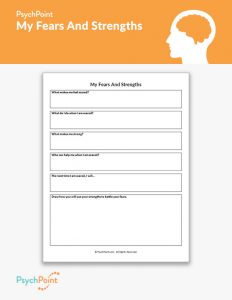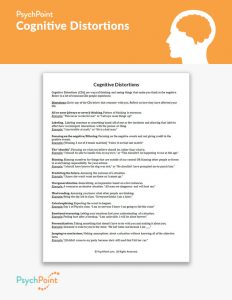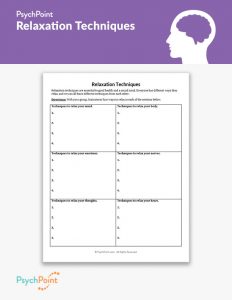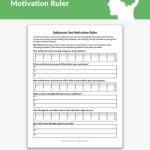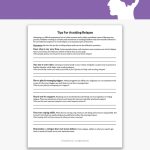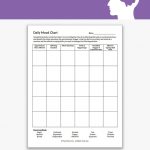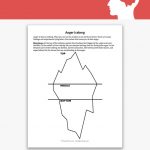Safety Plan Worksheet
Worksheet published on April 24th, 2023
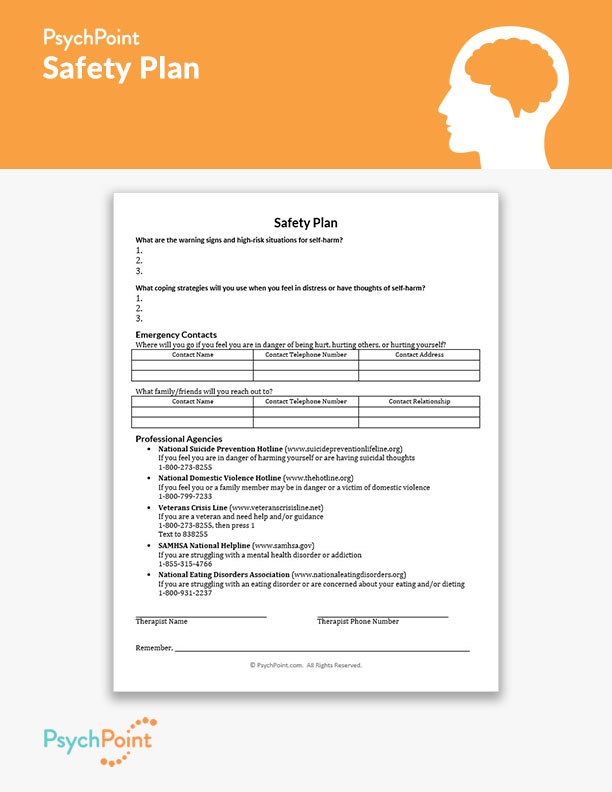
One of the most important responsibilities a therapist has is knowing how and when to screen clients for indicators that their safety may be compromised. As professionals, therapists do this to make sure their clients stay safe between sessions and have a plan in place when needed.
While not every client will require safety planning, therapists must be mindful of safety issues and know how to properly create a plan for those who are struggling more than others.
Whether the client is struggling with depression, anger, eating disorders, substance use, family issues, abuse, or suicidal ideation, therapists and mental health professionals must make sure that their clients are safe and know what to do if they find themselves in a high-risk situation. A safety plan also helps the therapist know the client’s available resources in their personal life and relay any public resources that could help them if they find themselves in crisis.
As professionals, therapists are trained to screen their clients for potential risks to their safety. When they have a client in front of them that is causing concern, they develop a safety plan. Safety plans are important because they make a plan for both therapist and client in the event of a dangerous or high-risk situation. A safety plan helps to ensure that a client knows what to do to take care of themselves, even when they cannot easily get in contact with their therapist.
About This Worksheet
This is the Safety Plan worksheet. The safety plan is generalized to fit different kinds of situations. It asks the client to identify the high-risk situations and warning signs they have in their day-to-day life. It also provides a space for the client to identify helpful coping strategies that the client will use in high-risk situations or when dealing with triggers for negative thoughts and destructive behavior. Most importantly, this worksheet provides a list of resources and places to call in the event of an emergency.
This safety plan worksheet can be used for adolescents and adults who are struggling with relapse prevention, self-harm, suicidal ideation, and other high-risk issues. It is intended to be used in individual counseling settings.
Instructions
The Safety Plan worksheet must be completed with the therapist and client working together. Make sure both the client and therapist have a copy, and that the safety plan is documented in the client’s chart. Instruct the client to keep the copy where it will be easily accessible to them in case of an emergency.
This worksheet provides a space to list names and phone numbers of emergency services in their area. It can be helpful to research the emergency services in the client’s residential county along with other mental health services that may be useful to them if needed before the session begins. Be sure to complete the safety plan by providing your full name, credentials, and phone number.

